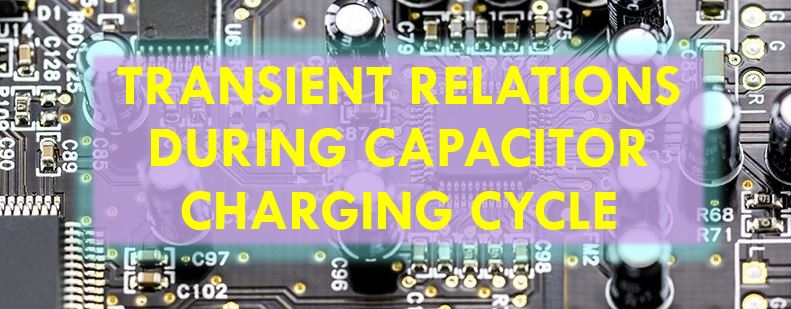Parallel Plate Capacitor
Uniform Dielectric-Medium
A parallel-plate capacitor consisting of two plates M and N each of area A m2 separated by a thickness d meters of a medium of relative permittivity εr is shown in Figure given below.
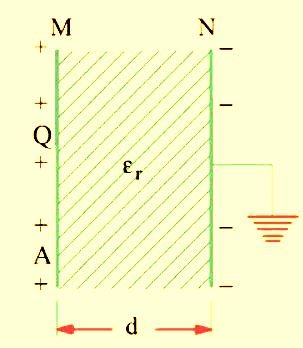
If a charge of + Q coulomb is given to plate M, then flux passing through the medium is ψ = Q coulomb. Flux density in the medium is

Electric intensity E = V/d and D = ε E

AdBlock-2
(ii) Medium Partly Air
As shown in Figure shown below, the medium consists partly of air and partly of parallel-sided dielectric slab of thickness t and relative permittivity εr. The electric flux density D = Q/A is the same in both media. But electric intensities are different.
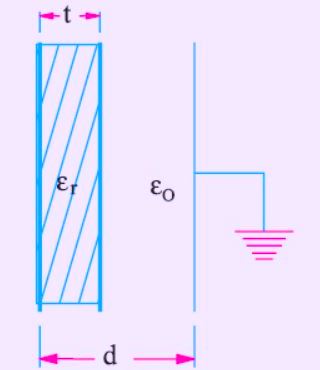

If the medium were totally air, then capacitance would have been C = ε0A/d
From (ii) and (iii), it is obvious that when a dielectric slab of thickness t and relative permittivity εr is introduced between the plates of an air capacitor, then its capacitance increases because as seen from (ii), the denominator decreases. The distance between the plates is effectively reduces by (t − t/εr). To bring the capacitance back to its original value, the capacitor plates will have to be further separated by that much distance in air. Hence, the new separation between the two plates would be = [d + (t − t/εr)]
The expression given in (i) above can be written as

If the space between the plates is filled with slabs of different thickness and relative permittivities, then the above expression can be generalized into

The capacitance of the capacitor shown in Figure of composite medium can be written as
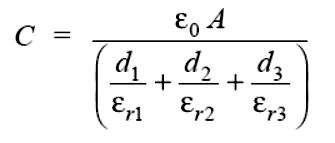
(iii) Composite Medium
The above expression may be derived independently as given under :
If V is the total potential difference across the capacitor plates and V1, V2, V3, the potential differences across the three dielectric slabs, then
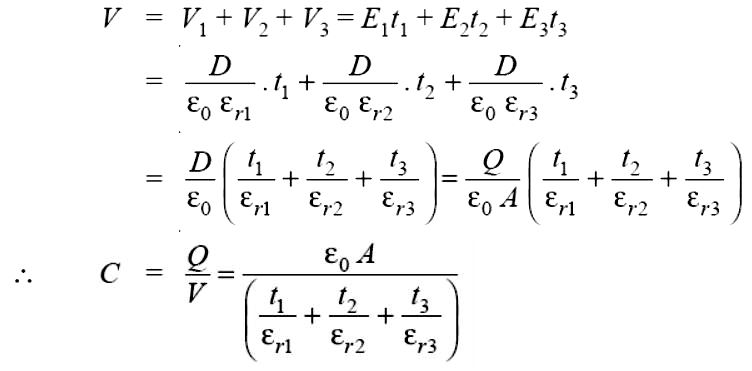

Special Cases of Parallel-plate Capacitor
Consider the cases illustrated in Figure given below
(i) As shown in Figure given below [Fig. (a)], the dielectric is of thickness d but occupies only a part of the area. This arrangement is equal to two capacitors in parallel. Their capacitances are
![]()
Total capacitance of the parallel-plate capacitor is

(ii) The arrangement shown in Figure (b) consists of two capacitors connected in parallel.
(a) one capacitor having plate area A1 and air as dielectric. Its capacitance is
![]()
(b) the other capacitor has dielectric partly air and partly some other medium. Its capacitance is

Total capacitance is C = C1 + C2
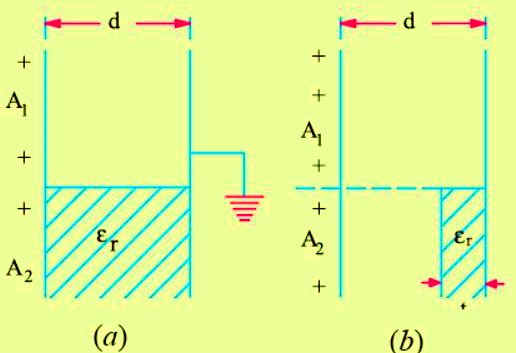
Read article – capacitance
Visit NCERTplanet.com for NCERT solutions and Textbook downloads


